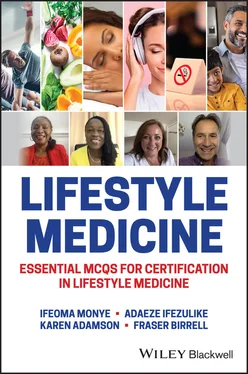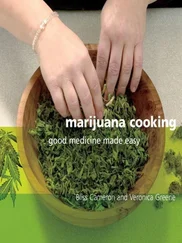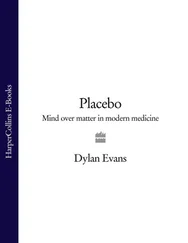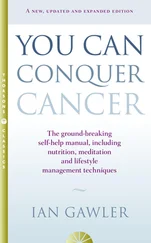39 Which of the following is the best description of the important role the patient’s social and environmental factors play in their health behaviour change?Can help support accountabilityCan have a negative influence due to scrutinyShould ideally be faith‐basedShould never be electronic social networks due to distractions
40 Which of the following is the most effective at undermining health behaviour change?Faith‐based groupsFamily and friendsPeer modelling strategiesPoor goal setting
41 Positive relationships can help support the patient’s health journey by encouraging which of the following?Self‐accountingSelf‐autonomy Self‐criticismSelf‐effacing
42 Which of the following is the most appropriate way for care providers to empower patients?Encouraging dependency on familyProviding monetary supportProviding social entertainmentSignposting to environmental and social support
43 Which of the following is a key feature of poor counselling techniques on health behaviour change?Encouraging introspection and focus on areas of weaknessEncouraging the involvement of family members in action plansGuiding the patient to do a social support analysisOffer stage‐matched intervention at every visit
44 52‐year‐old Sue has been found to have high cholesterol of 7.2 mmol/l. She says she hates vegetables and would not ever eat them. She is already considering registering with a gym to increase her physical activity but is concerned her bad knee may not allow her exercise much.On the advice of a friend, she has bought a cookery book to explore healthy meals that do not include vegetables. What is the best course of action to facilitate her health behaviour change journey?Cognitive Behavioural Therapy (CBT) to address her concern that her knee would be a limiting factorCognitive Behavioural Therapy (CBT) to counter her hatred of vegetablesMotivational interviewing to address her plans of registering with a gymMotivational interviewing to address her use of the cookery book
45 Lucy has a blood pressure of 173/92. She is adamant that she will not take medication. She is keen to try lifestyle changes and is already cooking with less salt and adding garlic to her meals. She refuses to go for a walk as she is afraid of the youngsters hanging about the street corners and her husband is always too tired to come walking with her.What is the best course of action to address her concerns?Cognitive Behavioural Therapy (CBT) to explore her mindset about taking medicationMotivational Interviewing to address her fear of youngsters in the streetMotivational Interviewing to address the perceived limiting effect that her husband’s tiredness is having on her healthPositive psychology to affirm what she is already doing with her meals
46 Which of the following is the most appropriate step in effective consultation during Action Planning?Address the patient’s questions about his diagnosisConfront the patient on his lack of progressSummarize the patient’s comments to show how negative he isThe doctor sets goals for patients to facilitate their behaviour change
47 In the precontemplation stage of health behaviour change, it is most appropriate to do which of the following?Ask the patient to identify the major obstacle to completing goal and strategy to overcome itElicit the patient’s level of confidence in achieving a specific goal (1–10 with 10 being extremely confident)Ensure goals are specificGive general advice on benefits of leading a healthy lifestyle
48 Action plans are lifestyle prescriptions tailored to the individual patient. Which of these is most appropriate to consider when drawing up action plans?AbilityFamilyNeighbourhoodSocial connections
49 Lifestyle prescriptions are best based on which of the following?Current level of activityMay be adjusted as the patient’s situation changesThe patient’s readiness for changeScientific evidence
50 Which of the following is best considered in relapse prevention plans?Develop plan at the precontemplation stageFixed to ensure stabilityRechecked with the patient as life situations changeShould not be planned in anticipation of a relapse
51 At which of these points is Cognitive Behavioural Therapy (CBT) most useful?At the precontemplation stage of changeThe patient is experiencing feelings of courageThe patient is feeling out of controlWhen the patient is succeeding with his goals to prevent him from getting too comfortable
52 Which of these most accurately describes relapse?Relapse is a sustained period when an action plan is not followedRelapse is easier to address before it becomes a habitRelapse is more likely to occur if an action plan is written downRelapse needs to be addressed as a continuation of the previous action plan
53 Which of these most accurately describes lapse?Lapse is a short period when an action plan was not followedLapse is more likely to occur if an action plan is written downIt can take less energy to re‐start an action plan if allowed to lapse for a long timeIt is easier to deal with a lapse by allowing some time to pass before revisiting the issue
54 Which of the following is the most appropriate to address in a relapse prevention plan?Disclosing the frequency of lapse occurrence in the populationThe patient identifying when a lapse is likely to occur and what to do thenWhat occupation predisposes the patient to lapsesWhat the patient’s neighbours frequently engage in that can cause a lapse
55 Which of these is the most appropriate self‐management strategies for lapse prevention?Digital and live exploration of triggersFrequent exposure to lapse triggersMaking use of the friends’ recommended social media sitesSupport with digital self‐help apps
56 Danny started smoking again after three months of abstinence. He now wants to quit smoking again. Which of these is the most appropriate advice for him?Create a backup plan at the time of any relapse to enable you stay on track.Encourage a significant other to help remind you of your action plan when they notice a lapseFrequent exposure to your smoking buddies to develop toleranceReach out to your care provider when you find yourself off action plan for more than a few months
57 As a care provider, your most appropriate next step in facilitating your client’s action plan is to:Emphasize the importance of a verbal action planEnsure action plans are completed based on readiness for appropriate behaviour change Keep a copy of the action plan in the medical archivesReview action plans every year
58 Which one of these is best avoided by the coach during follow‐up visits?Confront the patient’s lack of progressCongratulate the patient on the progress madeDiscuss barriers and develop solutionsDiscuss the progress made by the patient
59 Which of the following is best avoided during follow‐up?Failures should be discussed firstHave a patient’s action plan in front of youReflect back what the patient has reported to show an understandingSuccesses should be discussed first
60 Lifestyle prescriptions are best described by which of the following?Evidence‐basedSpecific to the patient’s peculiar health issueTailored to the patient’s abilitiesThe same as action plans
61 What is the next best step using motivational interviewing techniques in a patient who wants his chest to get better but does not want to stop smoking?The interviewer needs to discuss an action plan with the patientThe interviewer should develop discrepancy between where the patient is and what he wantsThe interviewer should withhold empathy to demonstrate the seriousness of the issueThe patient’s resistance is a cue to the interviewer to insist on a quit attempt
62 Which of the following statements most appropriately describes cognitive behavioural techniques?It assists with deeper understanding of underlying challengesIt is the counsellor’s job to generate the solutions as the expertPatient ambivalence is accepted as a natural part of change processPatient resistance is decreased using non‐confrontational methods
Читать дальше












